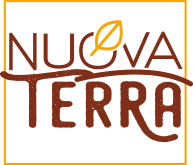The chickpea is an herbaceous plant belonging to the Fabaceae family. The plant produces seeds that are called chickpeas, pulses that are eaten in great quantities because of their elevated protein content.
Origin
Chickpeas are called “ceci” in Italian, and derive their name from the Latin word “cicer.” On this, there is the intriguing legend of how Cicero's last name came about. The legend goes that Cicero's distant forefather featured a wart on his nose, precisely in the shape of a “cicer” or chickpea. The chickpea has Turkish origins, and the first historical evidence of its existence date back to the time of the Bronze Age. Some archaeological remains that were found in Iraq confirm its cultivation.
WHY IT SHOULD BE EATEN
Rich in fiber, vitamin A and minerals, such as phosphorus, potassium, calcium, magnesium, and iron, chickpeas also contain substances that help to lower cholesterol in the blood and have diuretic properties. They are among the most digestible pulses, even though they have a higher fat content than other pulses.

Commercially, chickpeas are available dried to be cooked or already cooked in cans. There are also roasted and salted for snacks, or ground into flour to prepare purees, or farinata – a typical Ligurian recipe, akin to an oven-baked pancake.
When you buy them dry, before cooking, they should be rinsed under running water and put to soak in a bowl with warm water, changing it 2-3 times, for at least 12 hours. Soaking helps to soften pulses and eliminates harmful substances – such as Phylates, which are bad for the body – which are released into the water. This is why it's important to not use the water in which the pulses have been cooked.
Discard any chickpeas that float to the surface, they are no longer good. Rinse the chickpeas, put them in a saucepan with cold water, in such a way that the water is above the chickpeas by two fingers. Bring to a boil, skimming off the foam as it develops, then cook for about 3 hours, adding very hot water as it's absorbed, and add salt once it has cooked. Without their skin, they are easier to digest, so you may choose to remove the skins. To do this, once cooked, put them in a basin filled with water and vigorously move them around with your fingers, so that the skins will float to the surface and can be easily removed.
Otherwise, you can reduce them to a puree with a food mill, thus eliminating the skin (if you work them with a food processor, you will neither eliminate the skin, nor will you succeed in producing a truly velvety cream).

Two varieties of chickpeas are available on the market: the one cultivated in Italy and the Middle East, which is larger and straw-colored; and the one cultivated in India, Spain, and Mexico, which is smaller and reddish in color.




 E-Shop
E-Shop

 Back
Back








